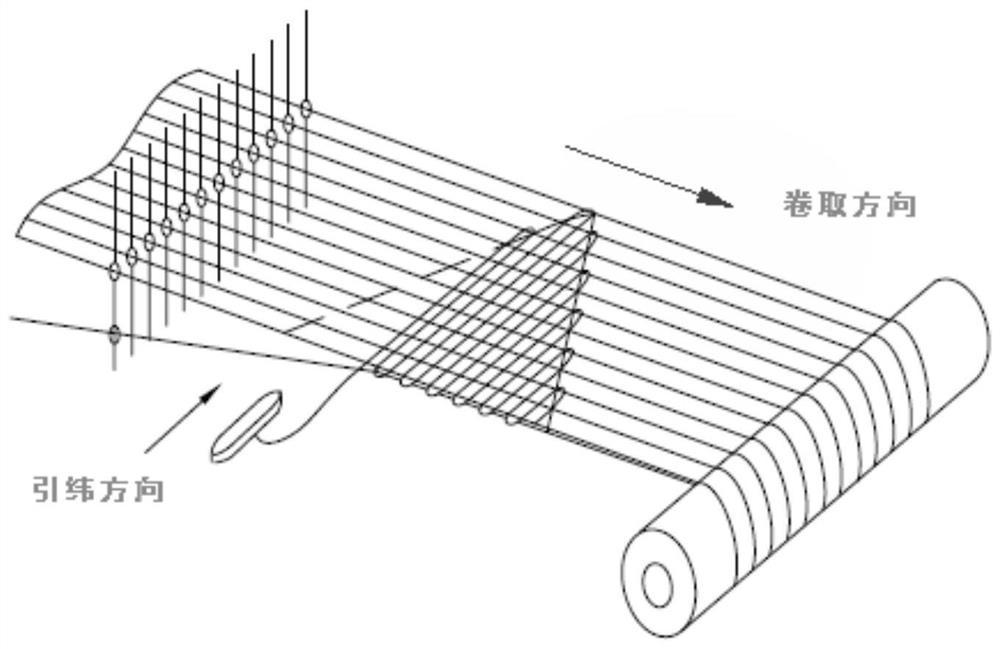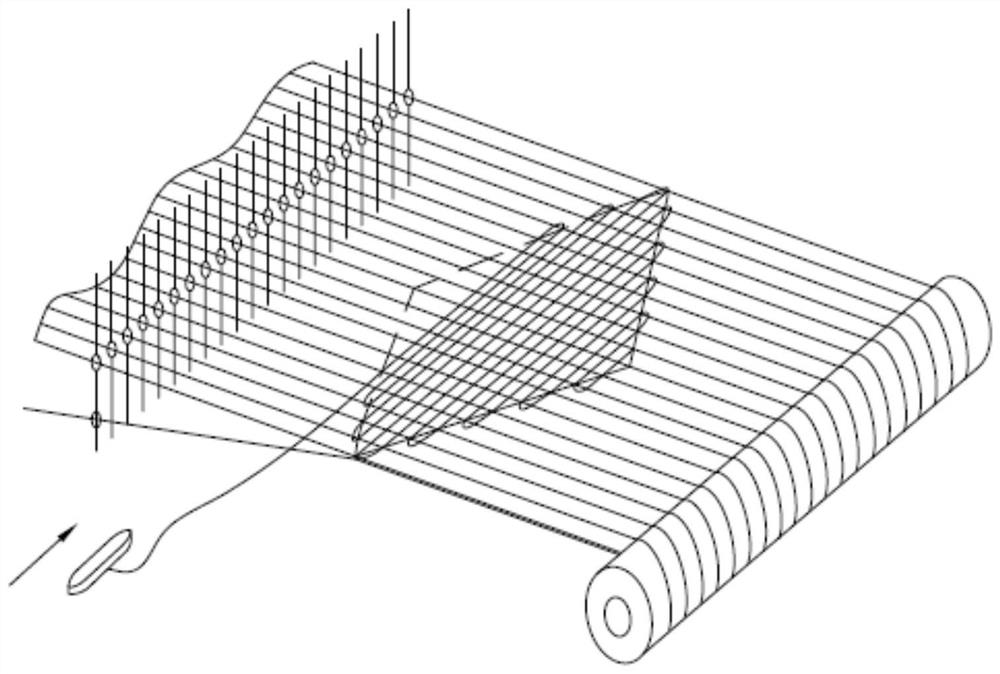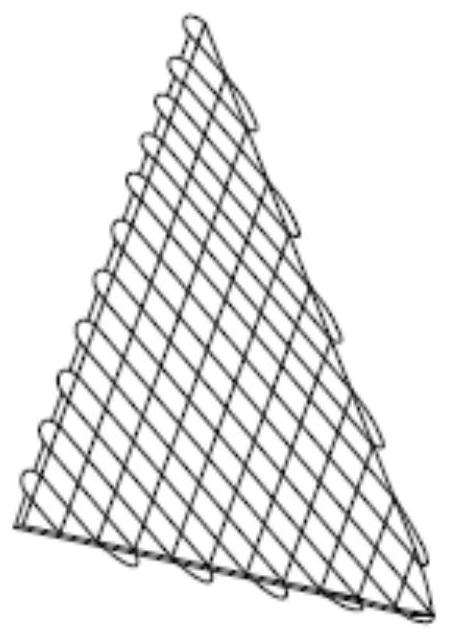A rotary shell fabric and its planar forming method
A shell and fabric technology, applied in the field of rotary shell fabric and its plane forming, can solve the problems of reducing the usability of the fabric, the influence of the warp continuity, etc., and achieve the effect of good top forming, realizing continuity, and ensuring continuity.
- Summary
- Abstract
- Description
- Claims
- Application Information
AI Technical Summary
Problems solved by technology
Method used
Image
Examples
Embodiment 1
[0032] This embodiment is a three-dimensional surface structure with a regular curved surface, and the outer shape of the fabric is as follows image 3 As shown, the diameter of the large end of the fabric is 300mm, the height is 600mm, and the warp yarn is 66tex×1 strand of quartz glass fiber, and the weft yarn is 66tex×1 strand of quartz glass fiber for weaving. 16 roots / cm.
[0033] Its design steps are:
[0034] Firstly, the three-dimensional fabric is flattened, and its shape and characteristic dimensions are recorded according to the forming method of turning 90 degrees.
[0035] Then carry out profiling design according to the appearance characteristics of the fabric, and place the top and the big end of the fabric on both sides of the weft insertion direction of the loom respectively;
[0036] According to the position of the top and large end of the fabric, combined with the density of warp and weft yarns, the number of warp yarns corresponding to the current weft i...
Embodiment 2
[0038] This embodiment is a three-dimensional surface structure with a regular curved surface. The diameter of the large end of the fabric is 200mm and the height is 500mm. The warp yarn is 66tex×1 strand of quartz glass fiber, and the weft yarn is 66tex×1 strand of quartz glass fiber for weaving. The weaving warp yarn density is 20 root / cm, the weft density is 16 threads / cm.
[0039] The design steps are as follows: first planarize the three-dimensional fabric, and record its shape and characteristic dimensions according to the forming method of turning 90 degrees. Then carry out profiling design according to the shape characteristics of the fabric, and place the top and big end of the fabric on both sides of the weft insertion direction of the loom respectively; according to the positions of the top and big end of the fabric, combined with the density of warp and weft yarns, calculate the corresponding position of the current weft The number of warp yarns, the density of wef...
Embodiment 3
[0041] This embodiment is a three-dimensional back-cone rotary body with a certain thickness. The corresponding fabric is a flat multi-layer fabric with a diameter of 500 mm at the big end and a height of 800 mm. The warp yarn is 200 tex × 2 strands of quartz glass fiber, and the weft yarn is 200 tex × 2 strands. The quartz glass fiber is used for weaving, the weaving warp yarn density is 14 yarns / cm, and the weft yarn density is 10 yarns / cm.
[0042] The design steps are as follows: first planarize the three-dimensional fabric, and record its shape and characteristic dimensions according to the forming method of turning 90 degrees. Then carry out profiling design according to the shape characteristics of the fabric, and place the top and big end of the fabric on both sides of the weft insertion direction of the loom respectively; according to the positions of the top and big end of the fabric, combined with the density of warp and weft yarns, calculate the corresponding positi...
PUM
 Login to View More
Login to View More Abstract
Description
Claims
Application Information
 Login to View More
Login to View More - R&D
- Intellectual Property
- Life Sciences
- Materials
- Tech Scout
- Unparalleled Data Quality
- Higher Quality Content
- 60% Fewer Hallucinations
Browse by: Latest US Patents, China's latest patents, Technical Efficacy Thesaurus, Application Domain, Technology Topic, Popular Technical Reports.
© 2025 PatSnap. All rights reserved.Legal|Privacy policy|Modern Slavery Act Transparency Statement|Sitemap|About US| Contact US: help@patsnap.com



